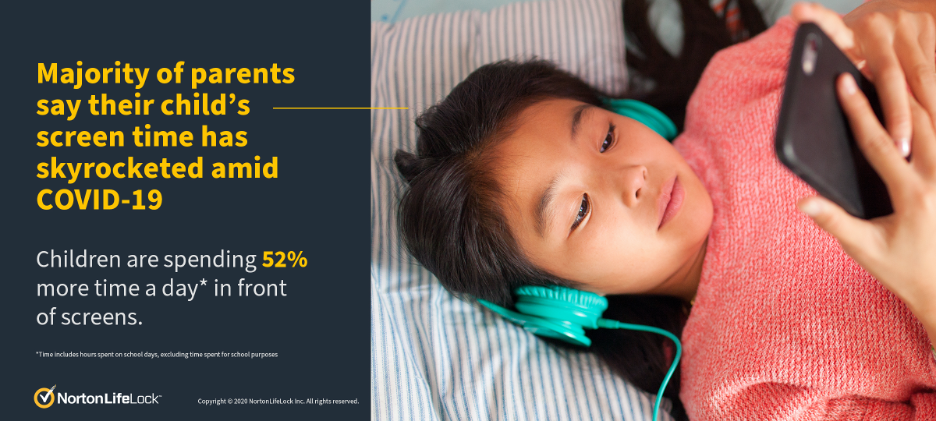Securing Your Child's Devices at Home During COVID-19
It’s National Cyber Security Awareness Month and being Cyber Safe has never been more important

NortonLifeLock Blog | Corporate Responsibility
By Kevin Roundy, Technical Director at NortonLifeLock Research Group
2020 has been a landmark year in so many ways. Among other challenges, people were forced to find innovative ways to work, learn, and socialize—many of these requiring a new level of digital connection. As a large number of adults and children in communities around the world transitioned to working and learning from home, new vulnerabilities were created.
According to a study NortonLifeLock recently conducted with The Harris Poll, 69% of parents of school-age children said that their child’s screen time has skyrocketed during the pandemic. Further, 57% reported that they accept certain risks to their child’s online safety to keep them entertained and occupied. This study shows that parents like me are not alone in struggling to find ways to keep our children safe and entertained during the pandemic.
Many of our kids are attending fewer social gatherings and logging on for distance learning while we, their parents, work from home. We know this unsupervised time spent on devices is leading to an influx of Cyber Safety risks - device hacking, location tracking, online predators - so what do we do to keep our kids safe?
As a researcher and a parent, I know that securing devices at home has never been more important. October is National Cyber Security Awareness Month and this is the perfect opportunity to raise awareness and teach our kids to be cyber safe. This year’s overarching theme is: Do Your Part. #BeCyberSmart. Part of being cybersmart is recognizing the increased risks of socializing and schooling from home and implementing stronger security practices.
I realize working parents have limited time, so here are four easy things you can do to help keep your kids cyber safe:
- Teach them to recognize scammers. Children need to be told that if it looks too good to be true, it probably is. It might seem obvious, but kids are unlikely to realize that pop-ups and emails offering free perks often lead to viruses, personal information being stolen, or both. To keep your kids cybersmart, teach them to think before they click. Whether they’re watching videos, playing games, checking email, or browsing the web, they should never click on a sketchy looking link or message from an unknown sender.
- Cyberbullying is never OK. Let kids know that any hateful comments or pranks are bullying and never allowed. Show them how to take screenshots of hostile messages or cruel photos, how to block bullies, and to come get you right away.
- Use tools to prevent distractions and filter inappropriate content. Setting up parental controls, like Norton Family, on your child’s devices limits access to certain websites or apps. This can help during the school day to prevent your child from getting distracted and block websites to prevent your child from accidentally being exposed to inappropriate content. Check that location services / tags are off on all your child’s devices
- Turn location tracking off. By default, mobile phones geotag photos with the location and time at which the picture was taken. By posting photos on social media our children can inadvertently reveal the location of their home or a park they visit regularly, which could have serious implications for their physical security. Check the Camera app settings on all of your child’s devices – location services / tags should always be set to off.
The best thing you can do: have an open conversation with your children about the risks posed by the internet and why it’s important to understand these risks. NortonLifeLock partners with National PTA on a free tool to help guide you through this conversation: The Smart Talk. This online tool walks families through a series of guided questions and helps parents and kids create tech ground rules together.

